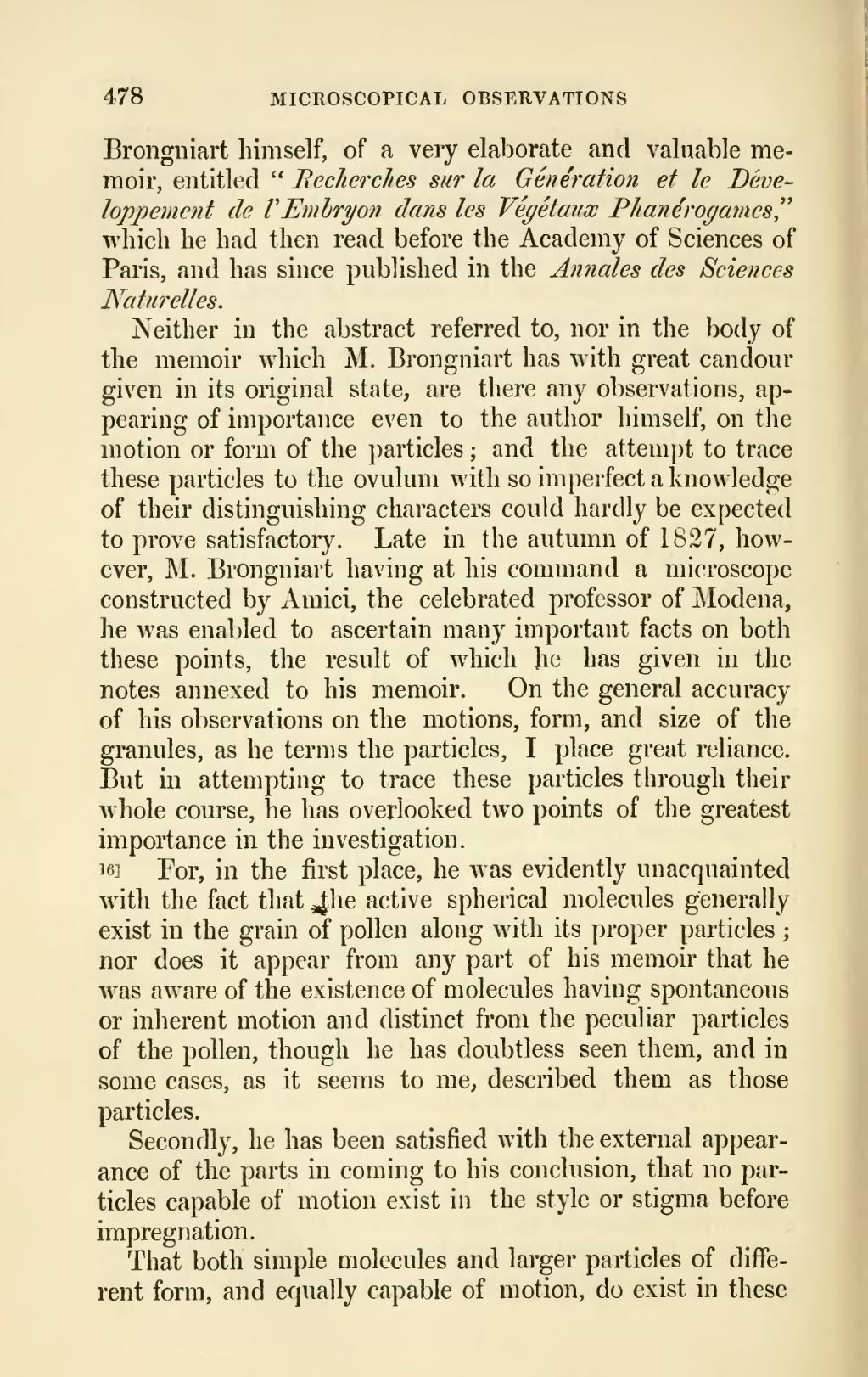Brongniart himself, of a very elaborate and valuable memoir, entitled "Recherches sur la Génération et le Développement de l'Embryon dans les Végétaux Phanérogames," which he had then read before the Academy of Sciences of Paris, and has since published in the Annales des Sciences Naturelles.
Neither in the abstract referred to, nor in the body of the memoir which M. Brongniart has with great candour given in its original state, are there any observations, appearing of importance even to the author himself, on the motion or form of the particles; and the attempt to trace these particles to the ovulum with so imperfect a knowledge of their distinguishing characters could hardly be expected to prove satisfactory. Late in the autumn of 1827, however, M. Brongniart having at his command a microscope constructed by Amici, the celebrated professor of Modena, he was enabled to ascertain many important facts on both these points, the result of which he has given in the notes annexed to his memoir. On the general accuracy of his observations on the motions, form, and size of the granules, as he terms the particles, I place great reliance. But in attempting to trace these particles through their whole course, he has overlooked two points of the greatest importance in the investigation.
16] For, in the first place, he was evidently unacquainted with the fact that the active spherical molecules generally exist in the grain of pollen along with its proper particles; nor does it appear from any part of his memoir that he was aware of the existence of molecules having spontaneous or inherent motion and distinct from the peculiar particles of the pollen, though he has doubtless seen them, and in some cases, as it seems to me, described them as those particles.
Secondly, he has been satisfied with the external appearance of the parts in coming to his conclusion, that no particles capable of motion exist in the style or stigma before impregnation.
That both simple molecules and larger particles of different form, and equally capable of motion, do exist in these
